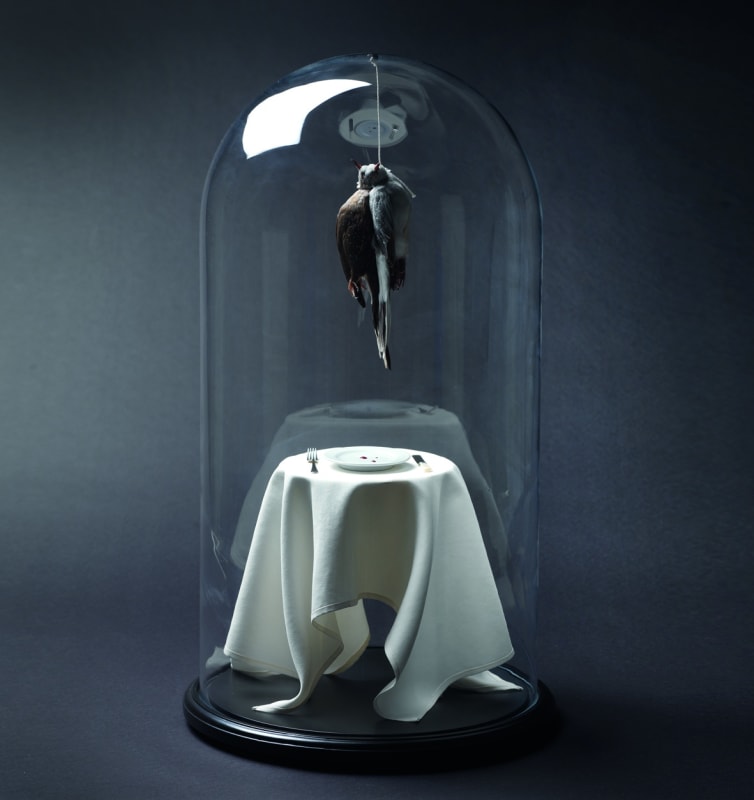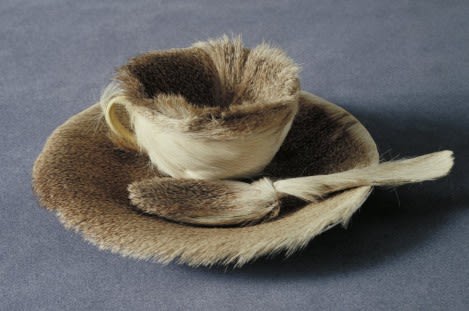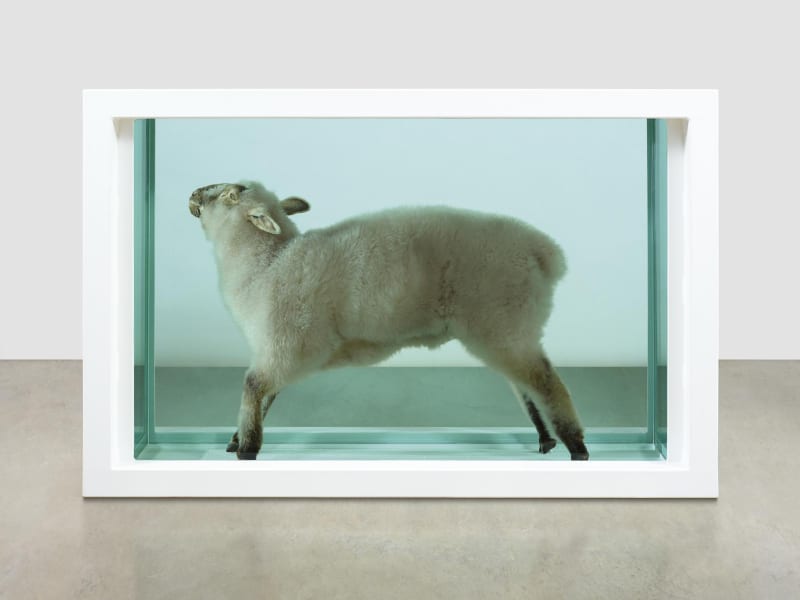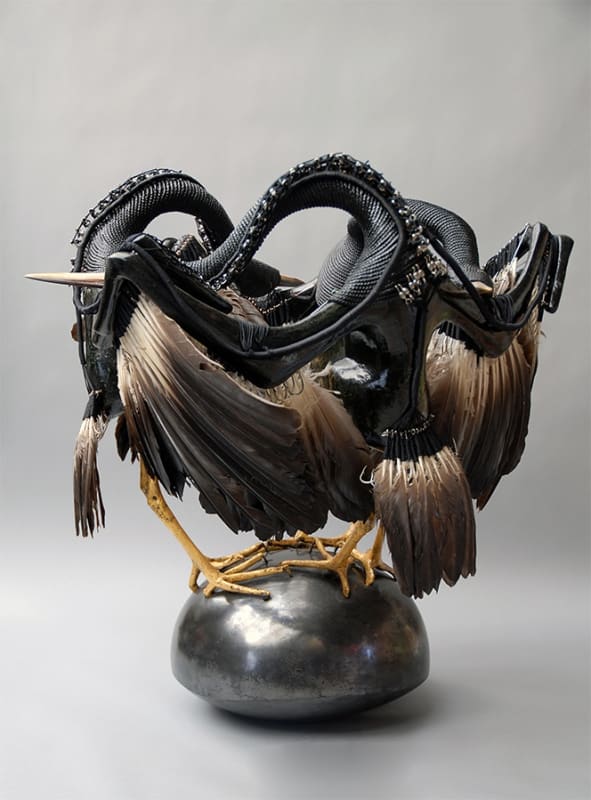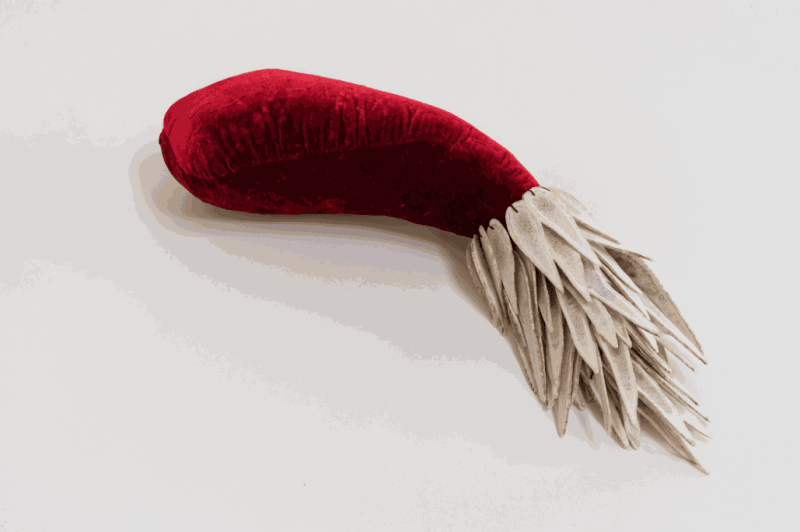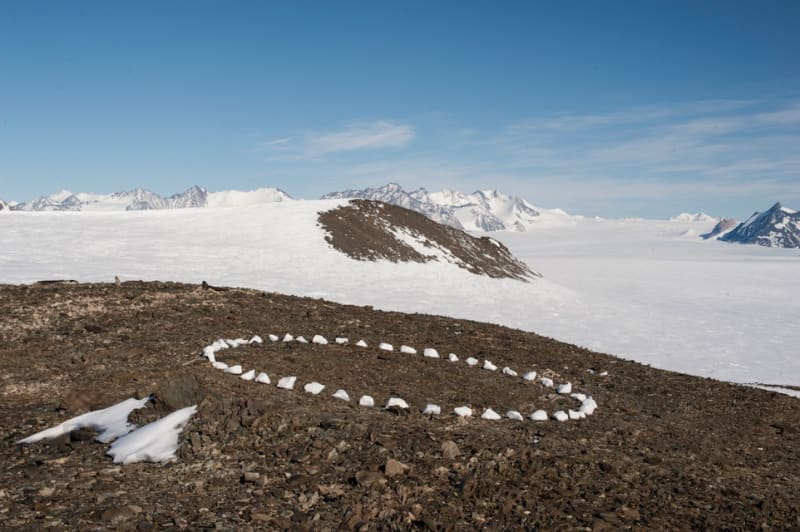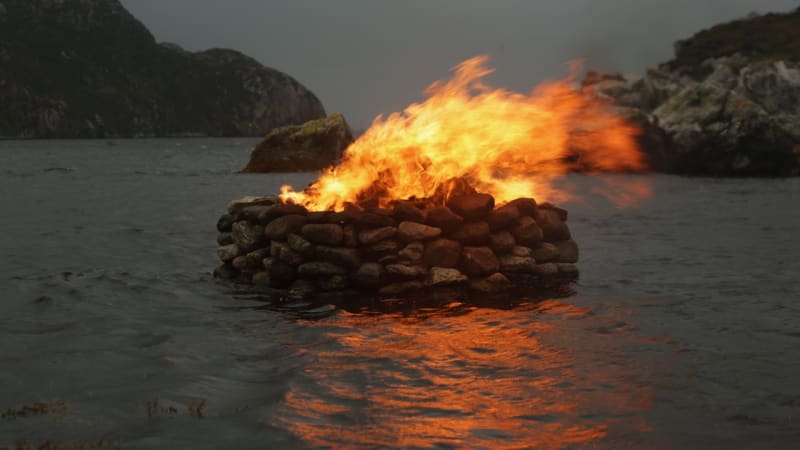|
1. Meret Oppenheim's ‘Object’ (illustrated above), was inspired by a conversation between Oppenheim, Pablo Picasso, and the photographer Dora Maar at Café de Flore, in Paris. Admiring Oppenheim’s fur-trimmed bracelets, Picasso remarked that one could cover just about anything with fur. “Even this cup and saucer,” Oppenheim replied.
2. At 7ft tall, George Taylor’s largest feather piece The Beast in Me (illustrated above) took nearly a whole year to make and is made up of nearly 5000 feathers!
3. During the mid 1990s, Julie Brook discovered a natural arch in a rock face on the rugged and remote Scottish island of Jura. At first, it was just an overnight shelter from a rainstorm, and then it became her home. She decided to build a raw camp and remained there for over two years by herself to experience solitude and the landscape; she wanted to be able to work without pressures or interruptions. Her first major job was to build a wind baffle from driftwood to help protect her from the Atlantic storms. She also made a cloth house where she could create a sheltered sleeping area.
4. Possibly the oldest surviving piece of taxidermy is found of a church in Ponte Nossa, Italy, where a stuffed crocodile, that dates from the 1530s, is hanging from the ceiling.
5. Susie MacMurray is drawn towards materials that a have a connection to the body - such as leather, bone, feathers and hair. The most unusual natural materials she has ever used include sausage skins, cottonwool earplugs, mussel shells, teasels, vegetarian lard, cotton slither, and horse hair.
|
